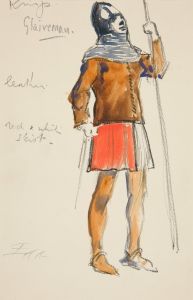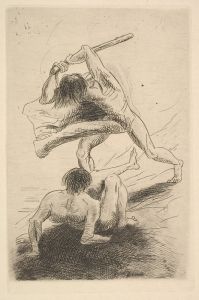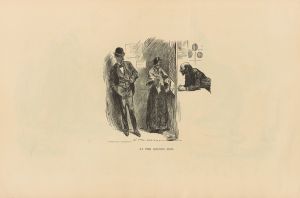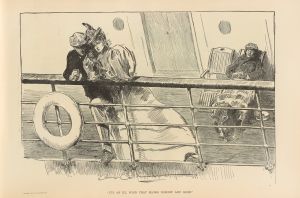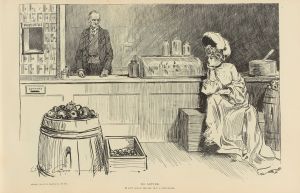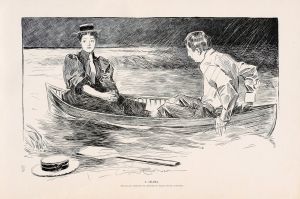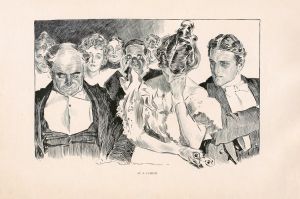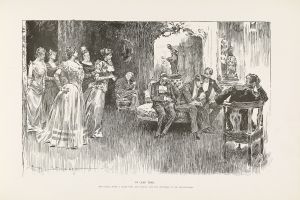
The tragedian and his landlady
A hand-painted replica of Charles Dana Gibson’s masterpiece The tragedian and his landlady, meticulously crafted by professional artists to capture the true essence of the original. Each piece is created with museum-quality canvas and rare mineral pigments, carefully painted by experienced artists with delicate brushstrokes and rich, layered colors to perfectly recreate the texture of the original artwork. Unlike machine-printed reproductions, this hand-painted version brings the painting to life, infused with the artist’s emotions and skill in every stroke. Whether for personal collection or home decoration, it instantly elevates the artistic atmosphere of any space.
Charles Dana Gibson was an influential American illustrator, best known for his creation of the "Gibson Girl," an iconic representation of the American woman at the turn of the 20th century. His work was widely published in magazines such as Life, Harper's Weekly, and Scribner's, and he became one of the most celebrated illustrators of his time. Among his many works, "The Tragedian and His Landlady" is a notable illustration that reflects Gibson's keen eye for social commentary and his ability to capture the nuances of human relationships.
"The Tragedian and His Landlady" is an illustration that showcases Gibson's characteristic style, which combines detailed line work with a humorous and often satirical perspective on society. The illustration depicts a scene involving a tragedian, or a dramatic actor, and his landlady. The interaction between the two characters is central to the piece, highlighting Gibson's talent for storytelling through imagery.
Gibson's illustrations often explored themes of social class, gender roles, and the complexities of human interactions. In "The Tragedian and His Landlady," these themes are evident as the illustration captures the dynamic between the artist and the landlady, possibly hinting at the struggles and misunderstandings that can arise between individuals from different social standings. The tragedian, likely depicted in a dramatic pose or expression, contrasts with the more pragmatic or stern demeanor of the landlady, creating a visual narrative that invites viewers to consider the underlying tensions and humor in the scene.
Gibson's work was characterized by its attention to detail and the expressive quality of his characters. He had a unique ability to convey emotion and personality through his illustrations, making his characters relatable and engaging to audiences. This skill is evident in "The Tragedian and His Landlady," where the expressions and body language of the characters tell a story beyond the immediate visual.
The illustration is also a reflection of the time in which Gibson was working. The late 19th and early 20th centuries were periods of significant social change in America, with shifts in cultural norms and the rise of new social classes. Gibson's work often commented on these changes, using humor and satire to critique and reflect on contemporary society. "The Tragedian and His Landlady" can be seen as part of this broader commentary, offering insights into the social dynamics of the era.
Overall, "The Tragedian and His Landlady" exemplifies Charles Dana Gibson's mastery of illustration and his ability to capture the essence of human interactions with wit and precision. While specific details about the illustration's publication or reception may not be widely documented, it remains a testament to Gibson's enduring legacy as a keen observer of society and a talented artist.







